How to develop with Eclipse IDE under IGEP Technology
From IGEP - ISEE Wiki
under construction
Contents
[hide]Overview
This guide can be helpful to learnt to develop applications under IGEP Boards using Eclipse IDE and IGEP SDK Yocto Toolchain.
Requirements
There are some requisites to follow this guide:
- IGEP SDK VM: follow the IGEP SDK SOFTWARE USER MANUAL (chapter 2.3 "Setting up and running the VM") or install Eclipse IDE in your host computer
- IGEP Processor Board
- MicroSD Card (optional: If you want to upgrade your IGEP Firmware)
- Eclipse Examples (with IGEP SDK VM is not necessary, there are included)
Pre-installed software on IGEP Processors Boards
(from Pre-installed software on IGEP Processors Boards)
Overview
If you have a brand new IGEP Processor Board you must know that it comes with a firmware provided and installed on it by ISEE.
By default, if you power up your board it will run the software on the flash. But you can prepare a MicroSD card and boot from it by inserting it to the MicroSD card reader of your IGEP Processor Board, as it has more priority than the flash.
The pre-installed software consists of a minimal Linux-based distribution with a lite X Window System and GNOME Mobile based applications created with Yocto Platform Builder.
About the pre-installed software
The pre-installed software consists of:
- IGEP X-loader: a bootloader compatible with all IGEP Processor Boards.
- IGEP Kernel: a Linux Kernel maintained by ISEE.
- IGEP firmware Yocto: the software distribution consists of a lite X Window System and GNOME Mobile based applications created with Yocto tools
For more information about these specific sotware, read the following articles:
Other useful articles:
- How to create a SD-card with the latest software image
- Update the PRE-INSTALLED software
- How to Create a bootable MicroSD card for IGEP devices

|
If you have any question, don't ask to ask at the IGEP Community Forum or the IGEP Community Chat | 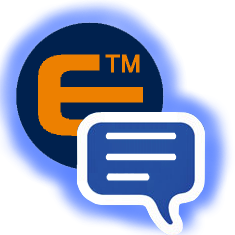
|
Using Eclipse IDE
(from How to install Eclipse IDE)
Eclipse is a multi-language software development environment comprising an integrated development environment (IDE) and an extensible plug-in system. It is written mostly in Java. It can be used to develop applications in Java and, by means of various plug-ins, other programming languages including Ada, C, C++, COBOL, Haskell, Perl, PHP, Python, R, Ruby (including Ruby on Rails framework), Scala, Clojure, Groovy, Android and Scheme. One of these interesting plugins is the Yocto Eclipse IDE Plug-in.
The Yocto Eclipse IDE Plug-in integrates the functionality of the Yocto Project Application Development Toolkit (ADT) and toolchain into the Eclipse IDE. This allows its users direct access to deploy, build, run and debug your own project. More information about Eclipse software here.
Create and Build projects
You can create two types of projects on Yocto Eclipse IDE Plug-in: Autotools-based, or Makefile-based. The IGEP SDK Virtual Machine provides already some examples that can be used as a template for your project. The examples are:
- C_example, autotools-based “Hello World” program written in C.
- Cairo_example, generates a png file named hello.png.
- Cpp_example, autotools-based “Hello World” program written in C++
- Dbus_example, sends "Hello Wolrd!" using D-Bus message system.
- Glib_example, simple “Hello World" written using Glib library.
- Gstreamer_example, ogg audio player using Gstreamer.
- Gtk_example, Hello World in GTK.
- C_example_without_autotools, makefile-base “Hello World” program written in C.
Import examples
NOTE: These steps are not necessary if you use IGEP SDK VM, examples are included by default
- Download examples
- Located your downloaded file, in my case is inside /home/Downloads:
jdoe@ubuntu ~ $ cd Downloads/
- Extract binaries:
jdoe@ubuntu ~/Downloads tar jxf Eclipse_examples.tar.bz2 -C ~/
- Go to File menu -> Import...
- Select General ->Existing projects into workspace
- Locate examples and finish the assistant
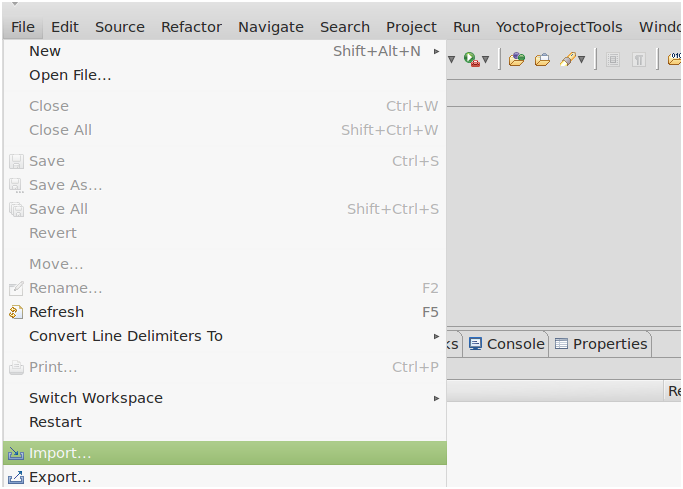
|
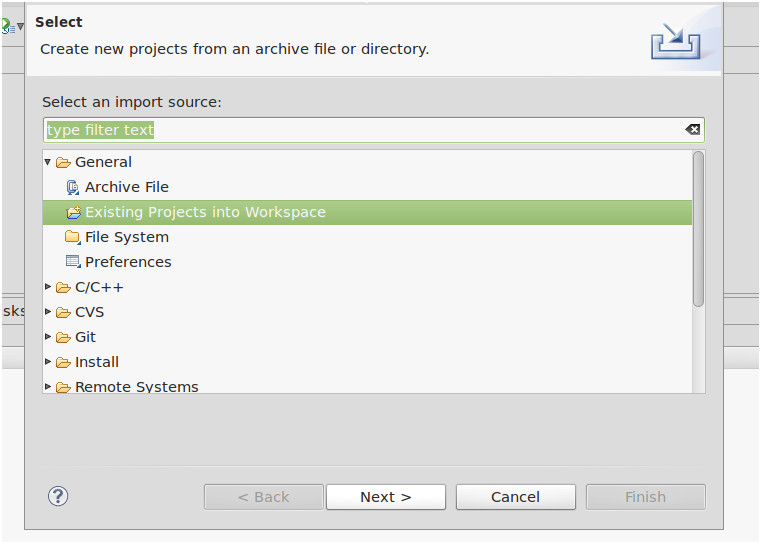
|
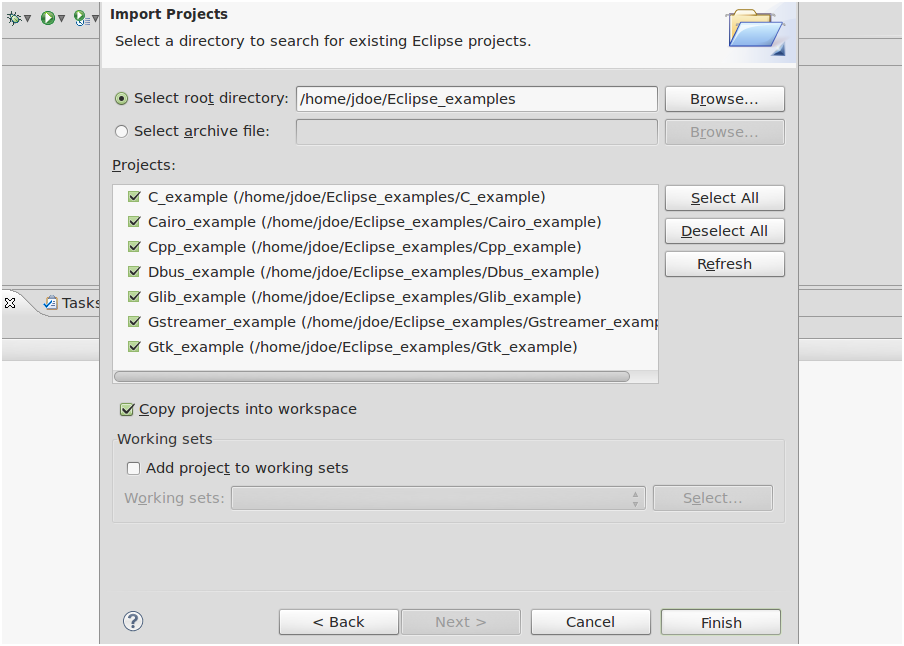
|
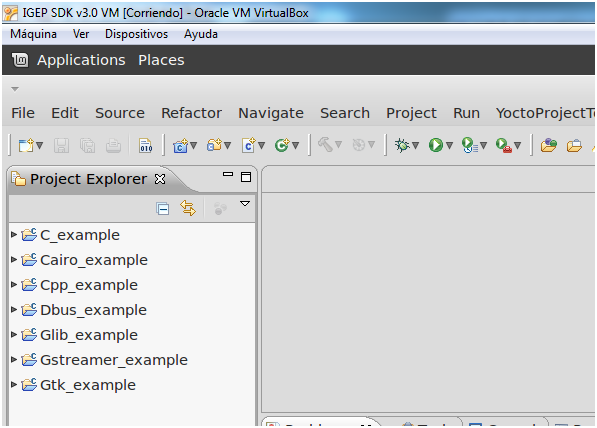
|
Click to enlarge image
Build an autotools-based project
To create your own project based on a Yocto template and then display the source code, follow these steps:
- Select File menu-> New -> Project.
- Double click C/C++.
- Double click C Project or C++ Project to create the project.
- Expand Yocto ADT Project.
- Select a template
- Select Hello World ANSI C Autotools Project or Hello World C++
- Autotools Project. This is an Autotools-based project based on a Yocto Project template.
- Put a name in the Project name: field. Do not use hyphens as part of the name.
- Click Next.
- Add information in the Author and Copyright notice fields.
- Be sure the License field is correct.
- Click Finish.
- If the "open perspective" prompt appears, click "Yes" so that you in the C/C++ perspective.
- The left-hand navigation pane shows your project. You can display your source by double clicking the project's source file.
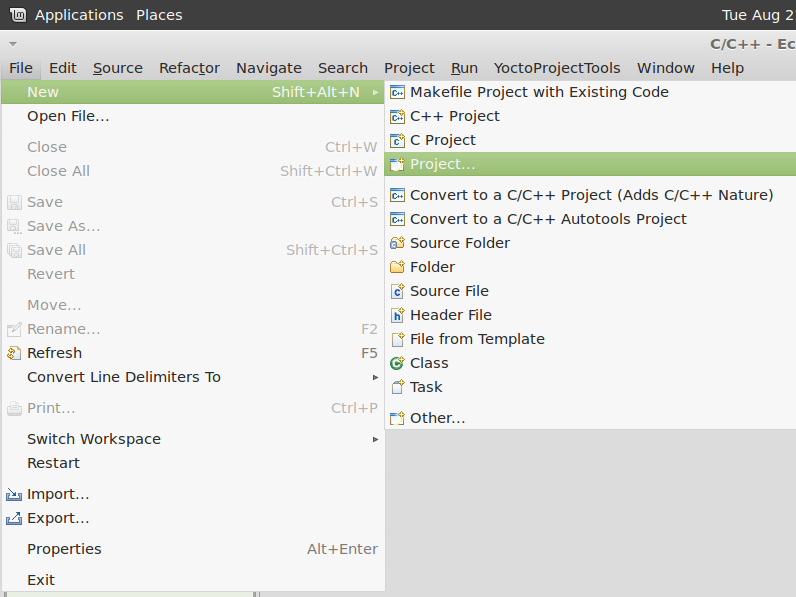
|
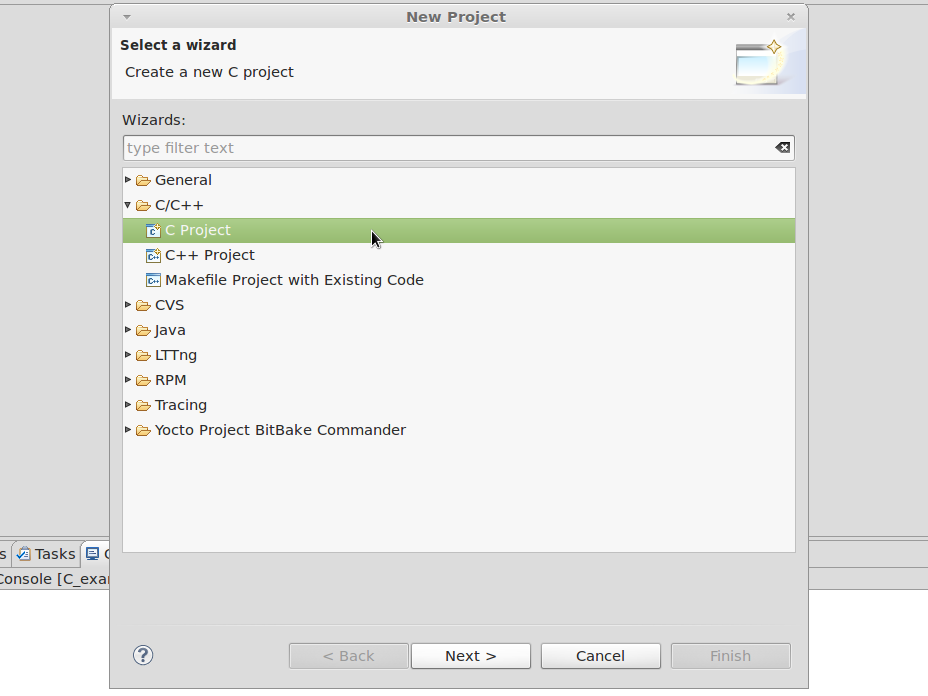
|
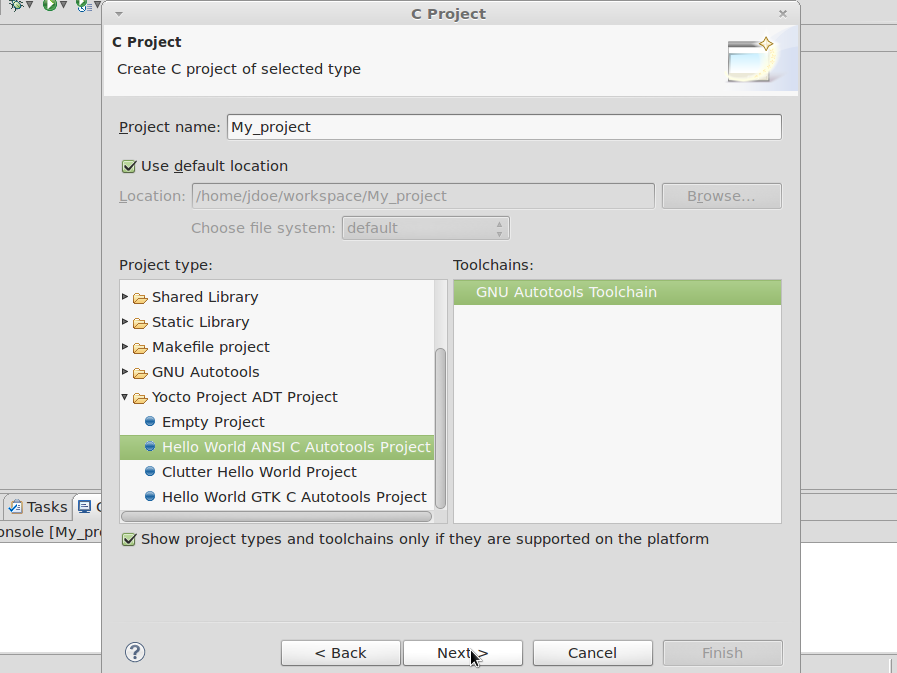
|

|
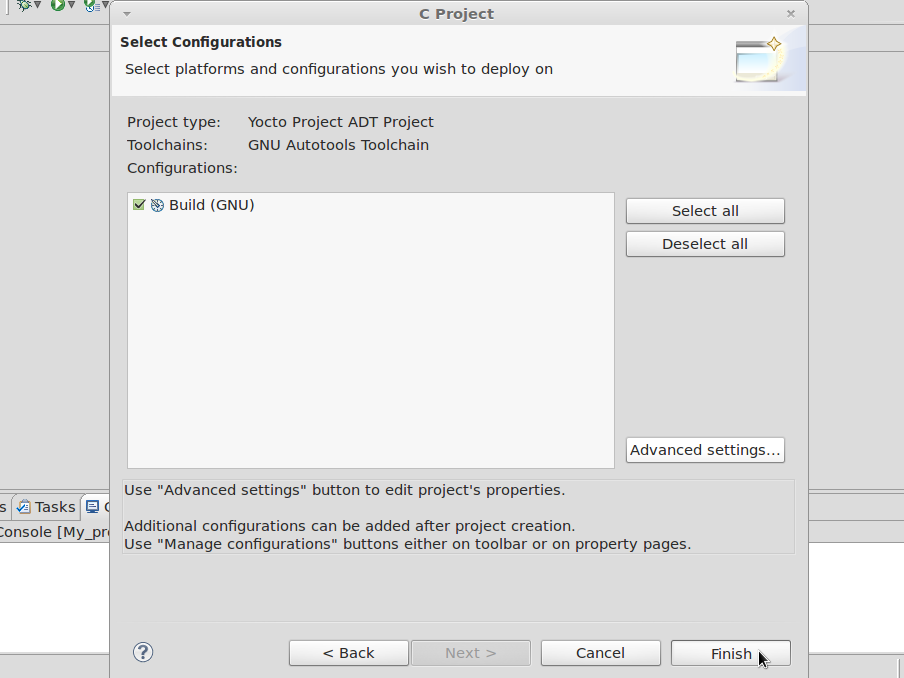
|
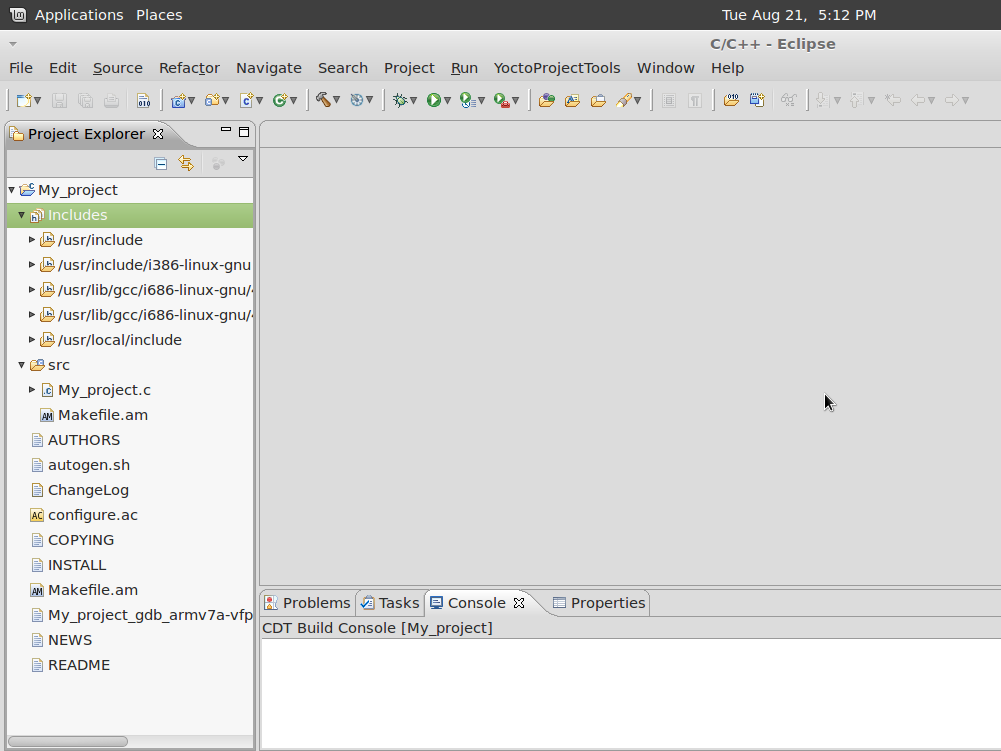
|
Click to enlarge image
Set up a connection between IGEP and Host computer
In IGEP SDK VM is configured by default in Eclipse IDE 192.168.5.1 IP adress for IGEP. If you want use another IP address you should do a new connection configuration.
(from How to install Eclipse IDE)
- Go to Window menu -> Open Perspective -> Other...
- Select Remote System Explorer
- In "Remote System" window, right click: New -> Connection...
- Select TCF system type
- In "Host Name" field type your <IGEP IP address>
- In TCF Connection Settings properties change Login:Required and Pwd.Required values to true
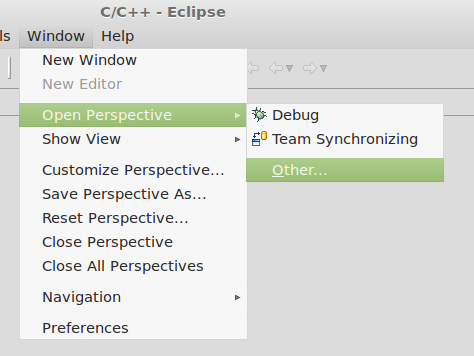
|
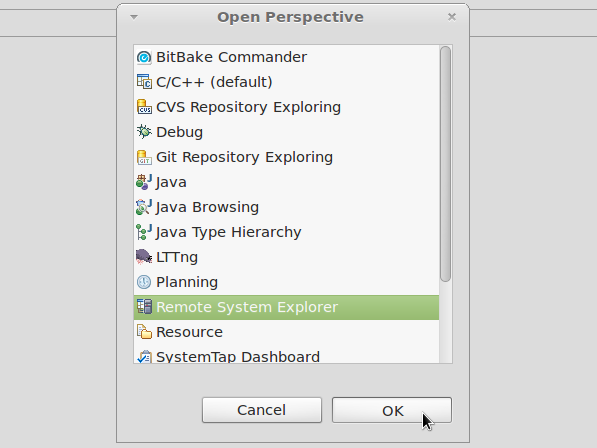
|
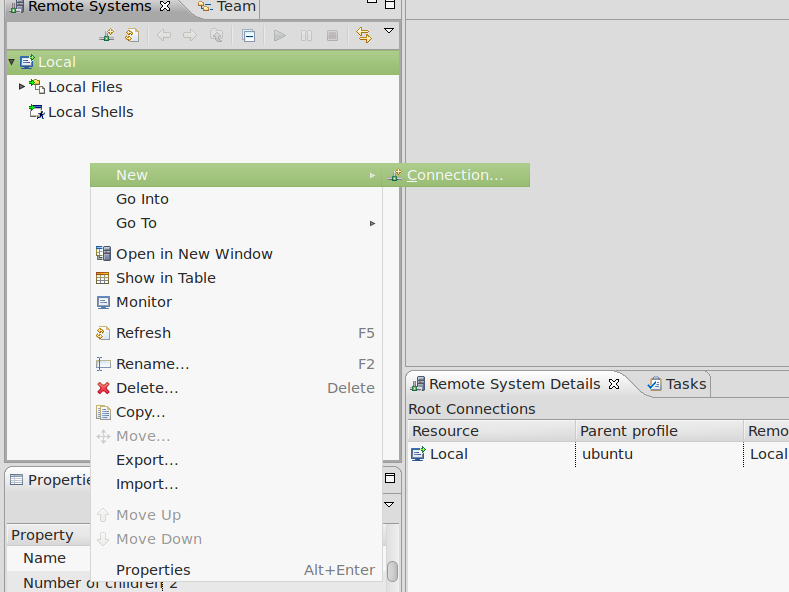
|
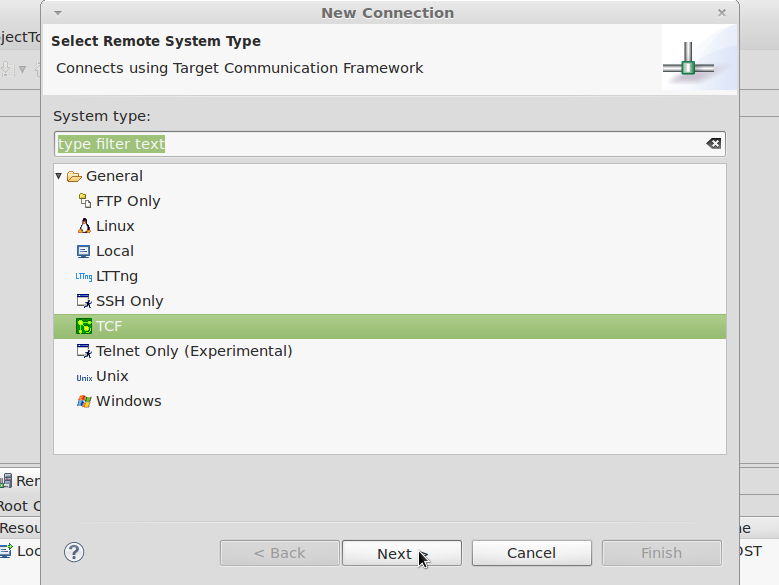
|

|

|
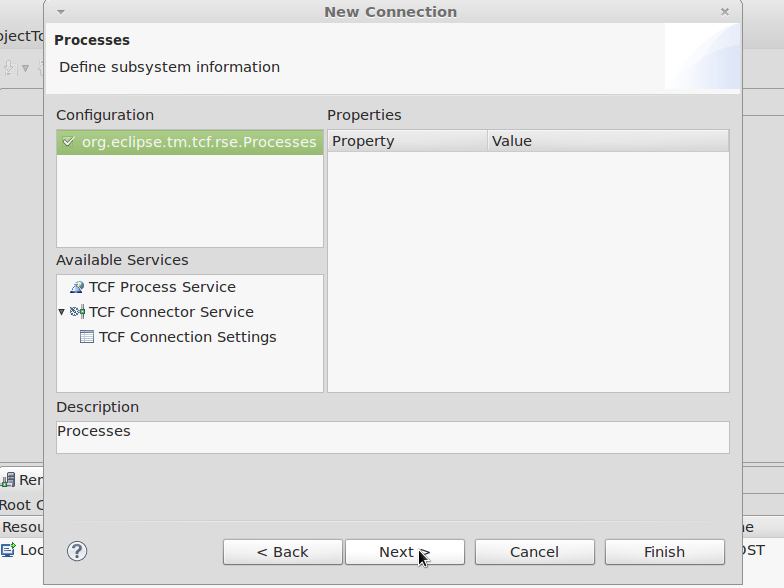
|
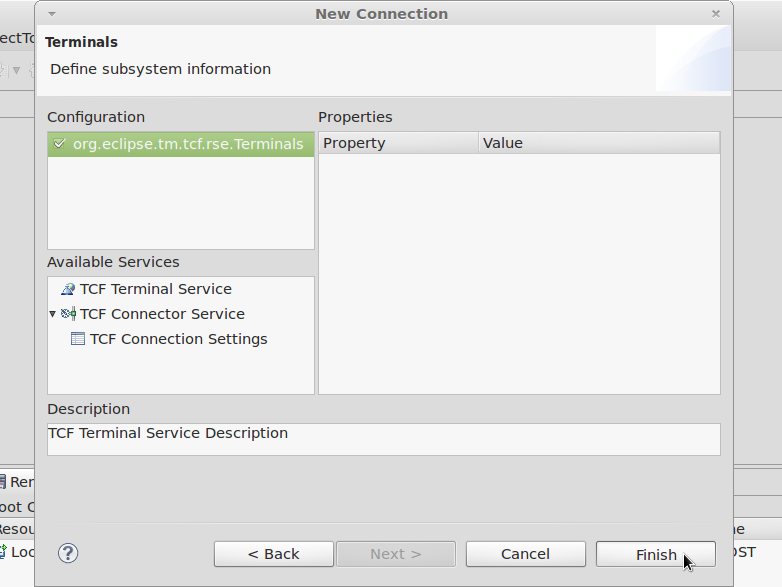
|
Click to enlarge image
Run programs remotely
Once you have compiled your program, use the following steps to run programs remotely:
- Select Run menu-> Run Configurations...
- In the left area, expand C/C++Remote Application.
- Locate your project and select it to bring up a new tabbed view in the Run Configurations Dialog.
- Enter the absolute path into which you want to deploy the application. Use the Remote Absolute File Path for C/C++Application: field. For example, enter /usr/bin/<program name>.
- Select Remote Connection
- If field is empty search your C/C++ Application
- Use other option as you want like program arguments or commands to execute before application run
- Finally run your program
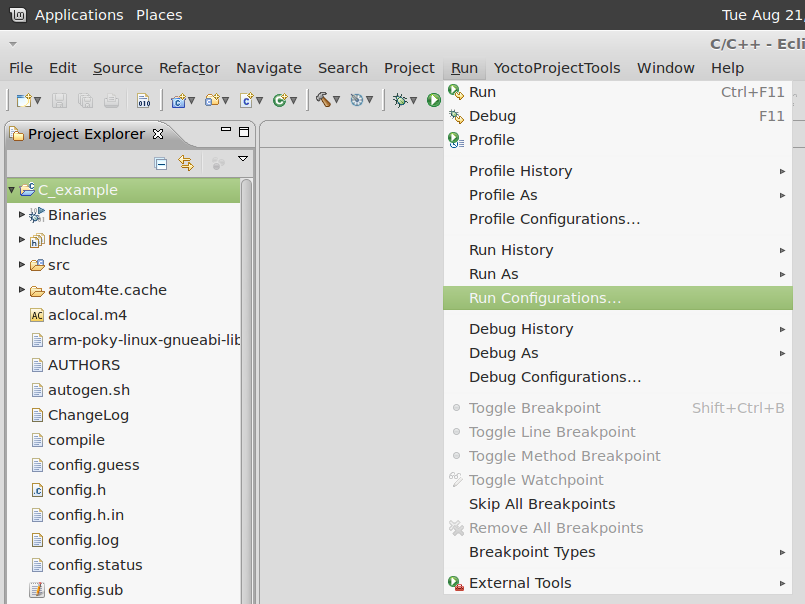
|
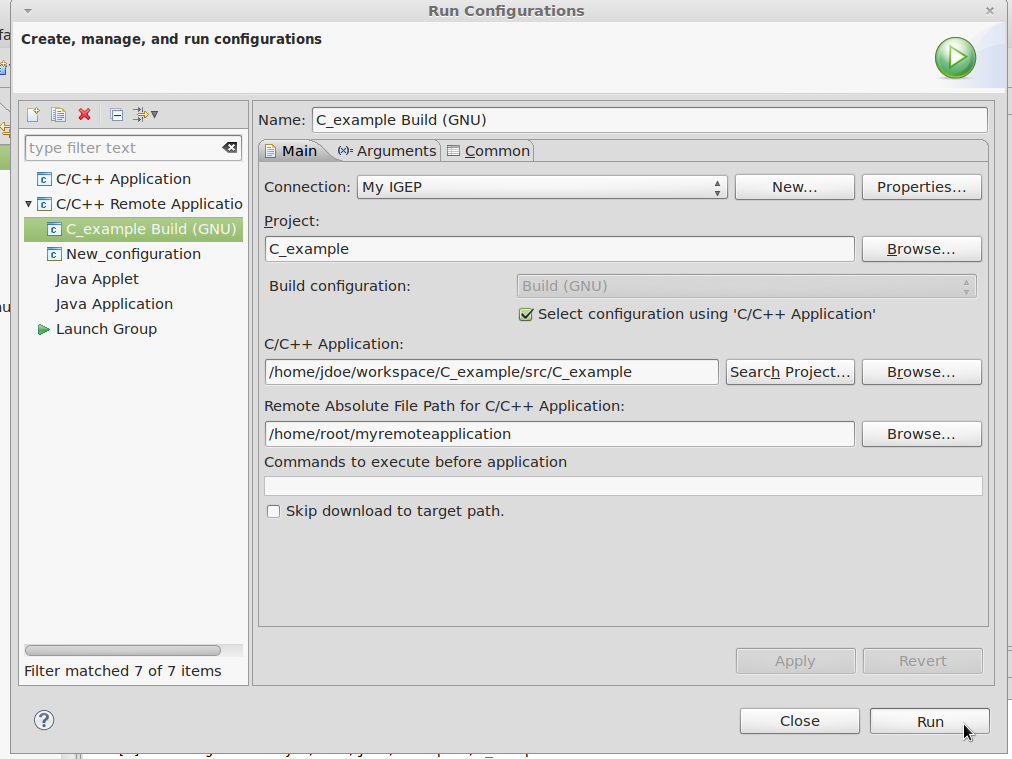
|
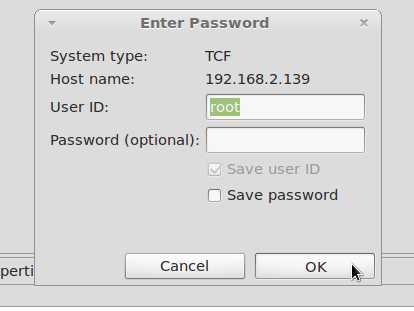
|
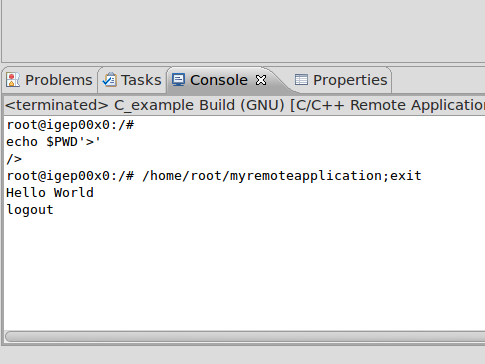
|
Click to enlarge image
Debug programs remotely
Once your program can run in your IGEP device you debug your application. Follow these steps to debug the application.
- Select Run menu-> Debug Configurations...
- In the left area, expand C/C++Remote Application.
- Locate your project and select it to bring up a new tabbed view in the Debug Configurations Dialog.
- Enter the absolute path into which you want to deploy the application. Use the Remote Absolute File Path for C/C++Application: field. For example, enter /usr/bin/<program name>.
- Select Remote Connection
- If field is empty search your C/C++ Application
- Use other option as you want like program arguments or commands to execute before application run.
- Click Debug
- Accept the debug perspective if it’s not the default perspective.
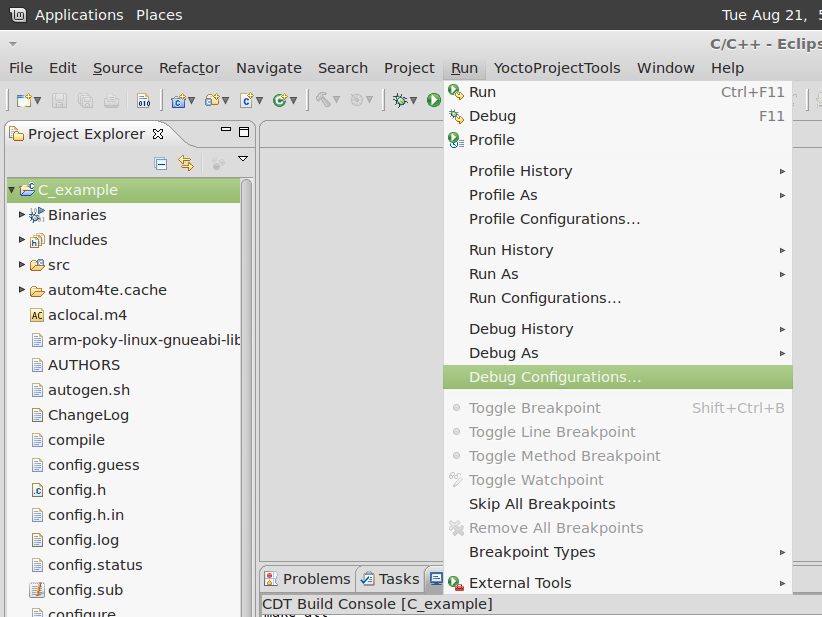
|
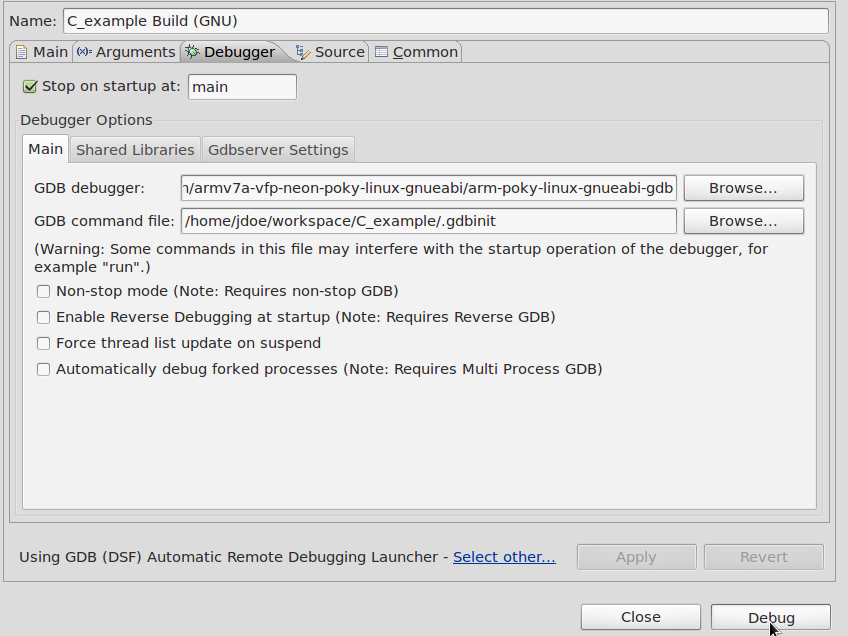
|
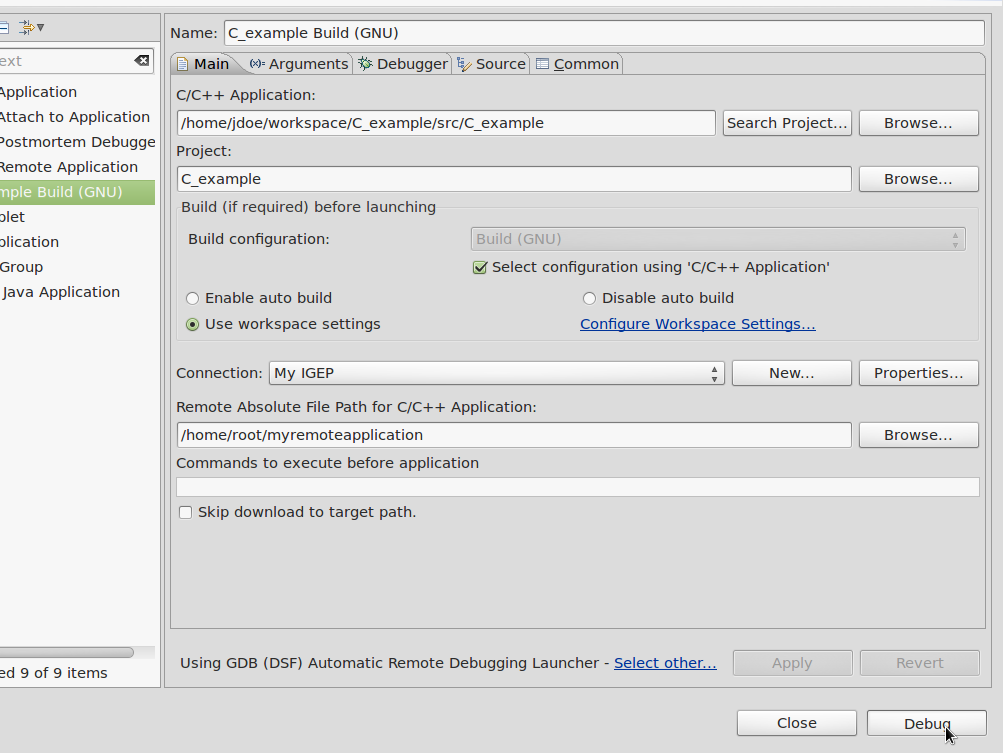
|
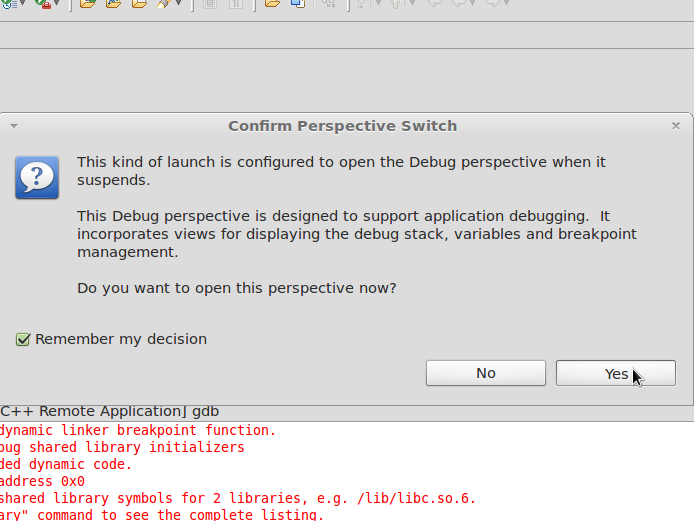
|
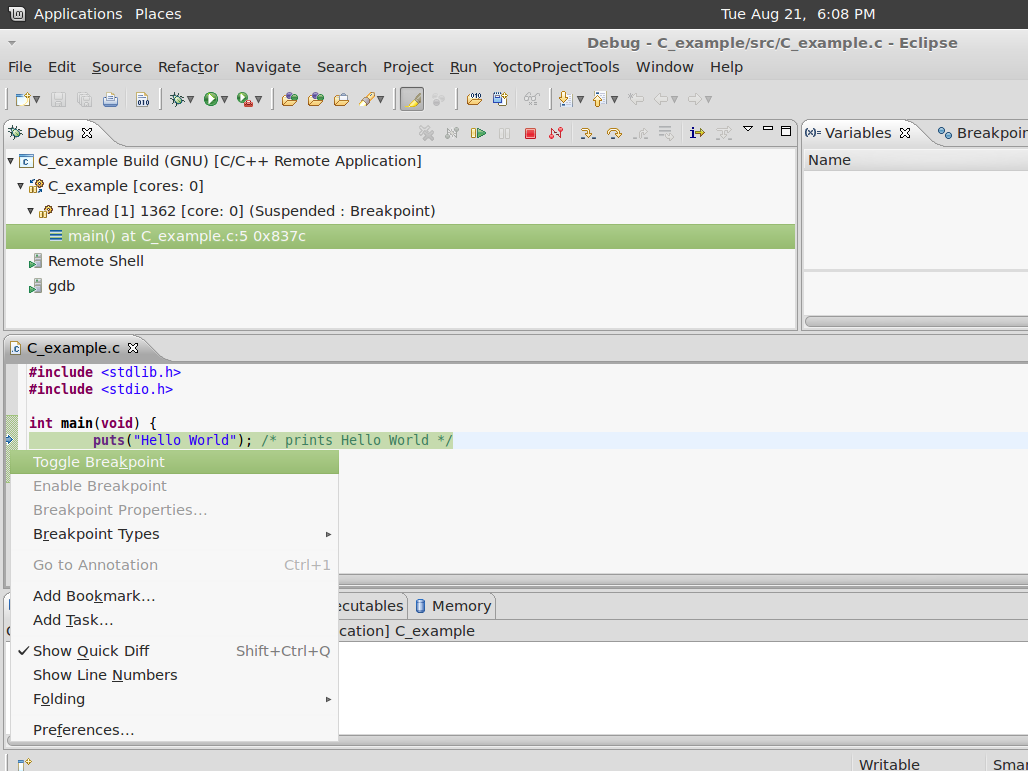
|
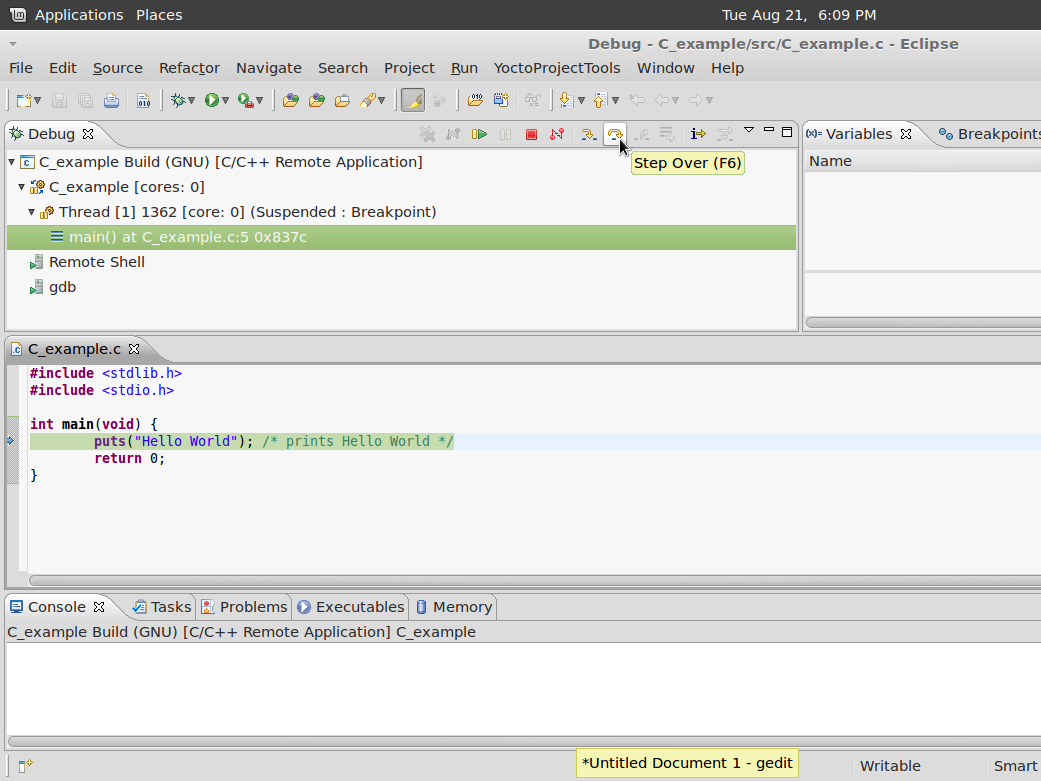
|
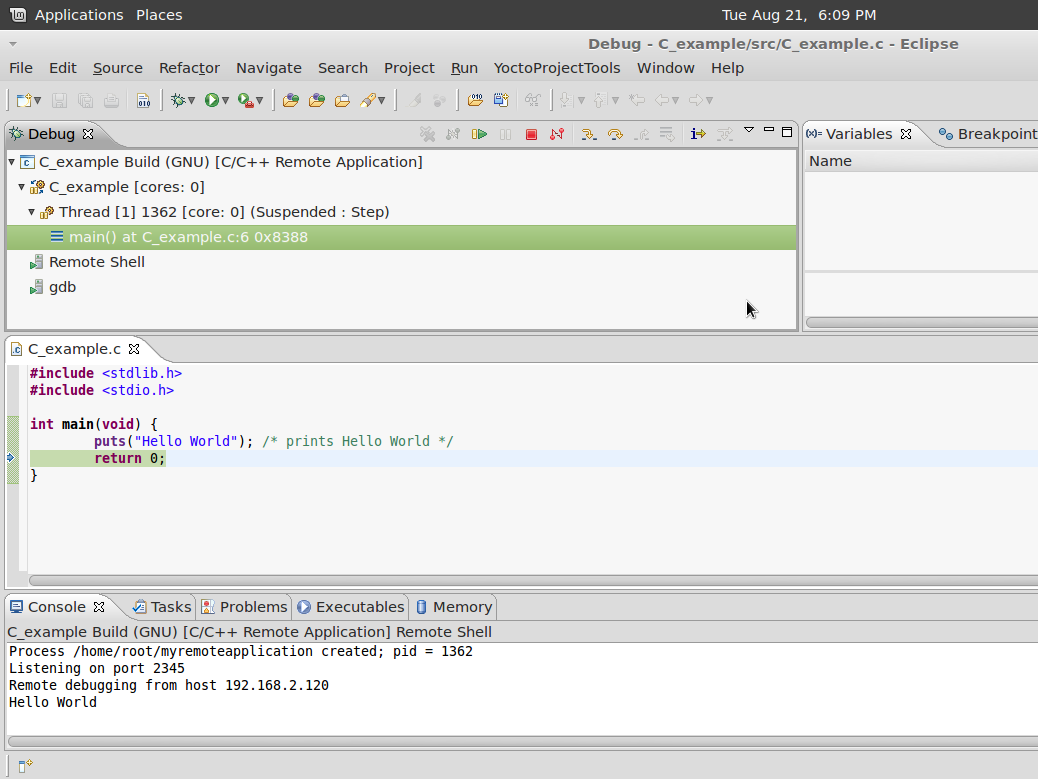
|
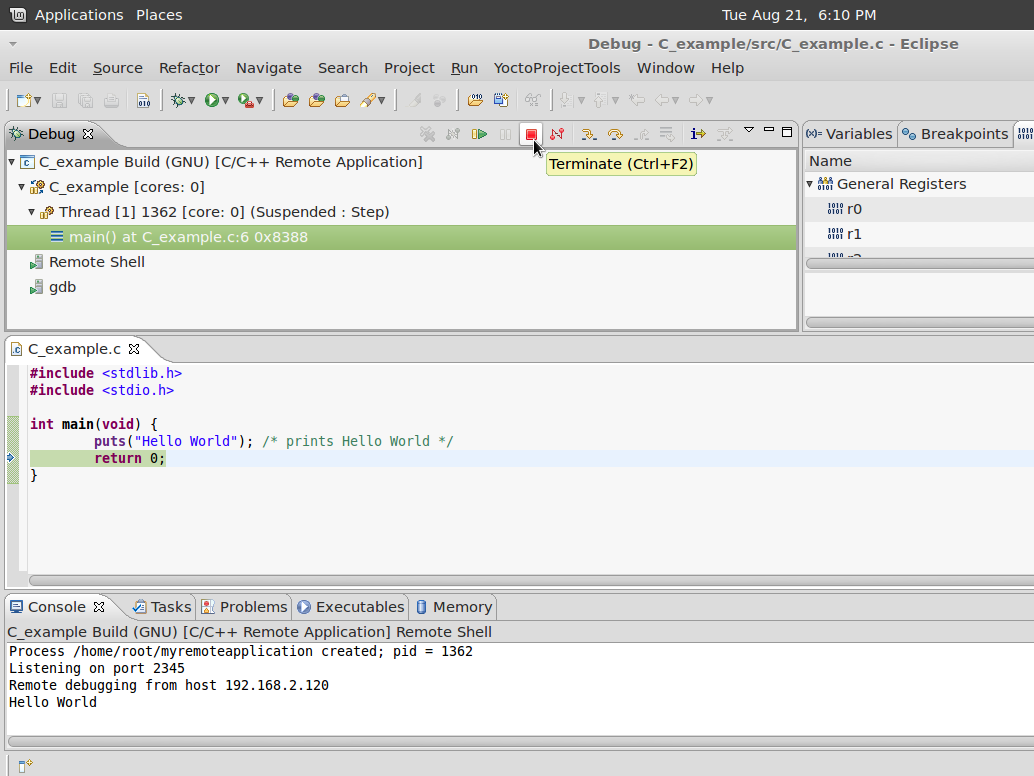
|
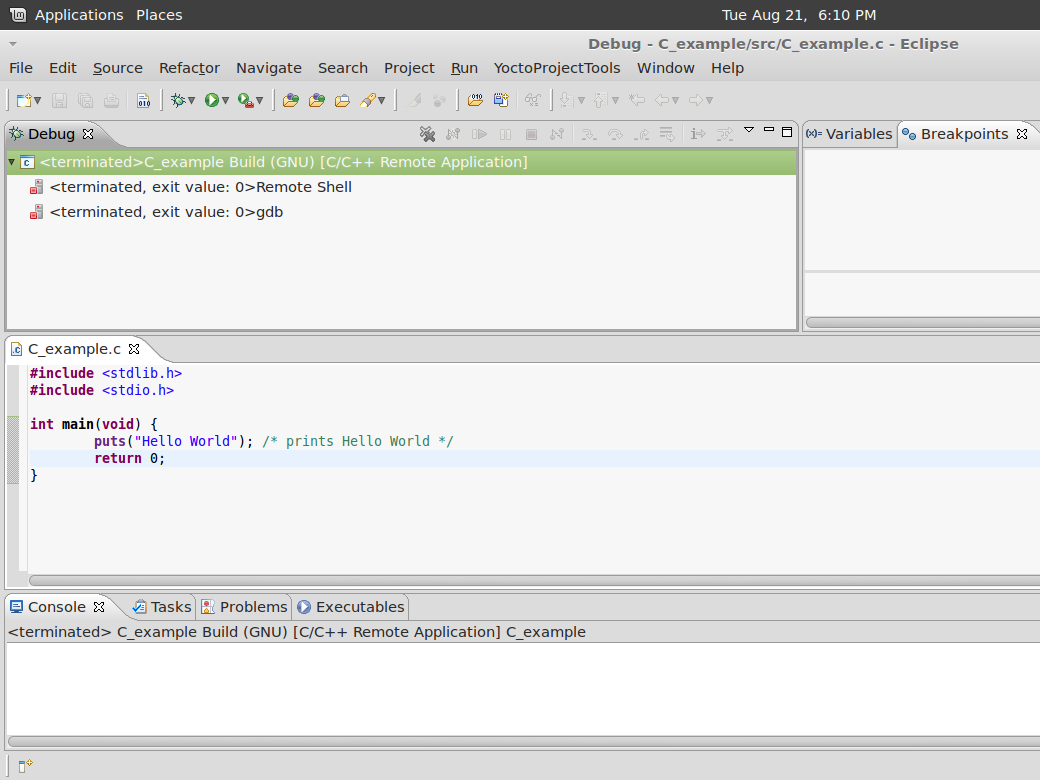
|
Click to enlarge image
Other uses
Explore IGEP filesystem remotely
You can manage your IGEP files using Remote System Explorer:
- Launch a remote terminal
- Import/Export files
- Rename files and folders
- Copy, Paste, Delete, Cut ...
- etc.
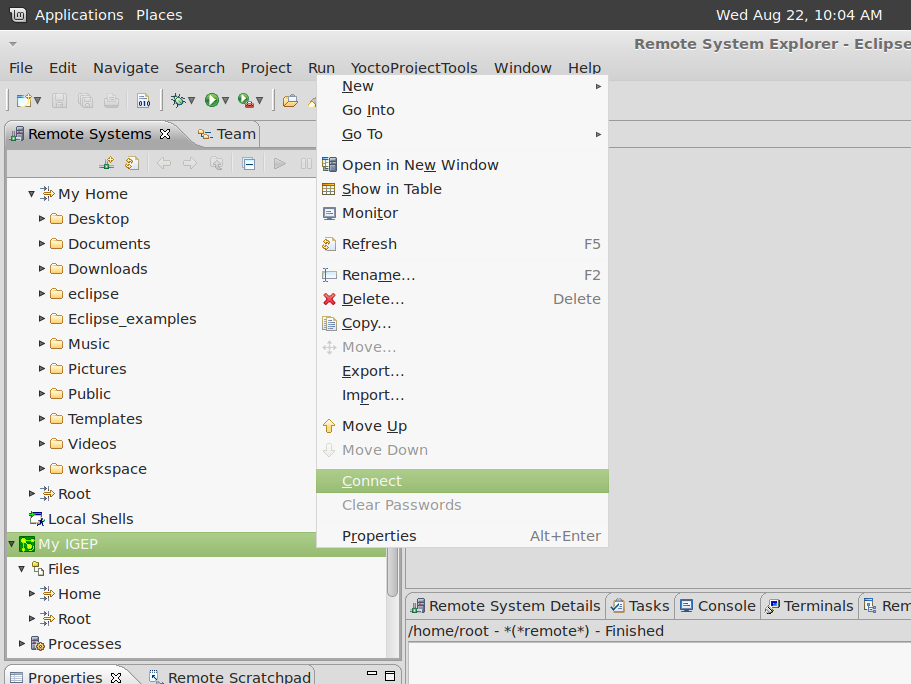
|

|
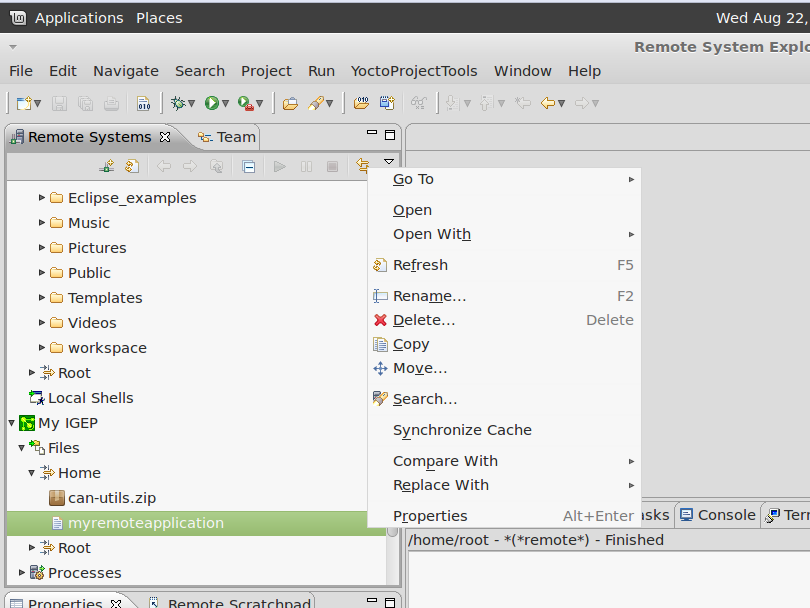
|

|


